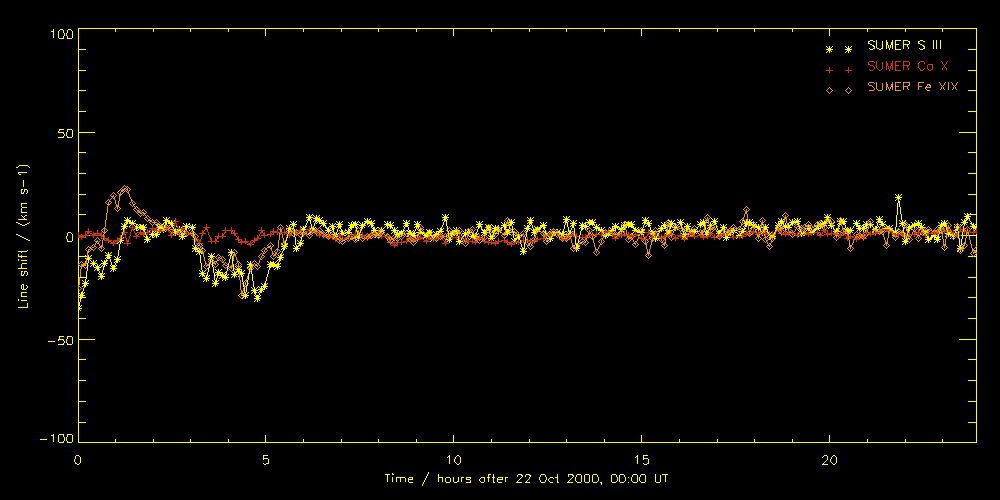
The sequence W,R,L,R,L,R,L,R,L,R,L is repeated 46 times, where W refers to the whole spectral window (1098-1138 Å, format 2), while L and R refer to the left and right part of this window - with a small overlap containing the Ca X 1115/2 and the Fe XIX 1118 line - which are repeated five times, alternating (both in format 38).
In a first approach, 231 "left" windows (format 38, 1108.26 Å on pixel 731) were analysed. This leads to a sequence of images approx. 6 minutes apart. - In a second approach, all formats were used; the 2D images are accordingly updated. - Meanwhile, EIT took images of the whole Sun approx. every 12 minutes. The SUMER slit points to a coronal loop system above an active region at the south east limb. During the time of the study, according to the events page, a C3.6 flare occured between 01:13 UT and 03:57 UT with a maximum at 02:31 UT. According to the EIT entries on our JOP 104 (Oct 2000) page, two CMEs occured (01:13-02:12 UT and 04:36-06:00 UT). SUMER observes a big brightening in Fe XIX, but otherwise not much like the other flare observations.
Representative lines were selected for analysis: One relatively cool transition region line, S III + Si III 1113.22 (30 000 - 63 000 K), one coronal line, Ca X 1115.51/2 (740 000 K), and one "hot" coronal line, that only shows up in flare situations, Fe XIX 1118.073 (7 700 000 K). The images below show the SUMER slit with time moving from left to right for approx. 24 hours. Shifts were determined relative to the (not very dynamic) Ca X line. - In the "right" window, which does not contain S III 1113.22, the comparable line S IV 1122.52 was used as a substitute to fill in the gaps.
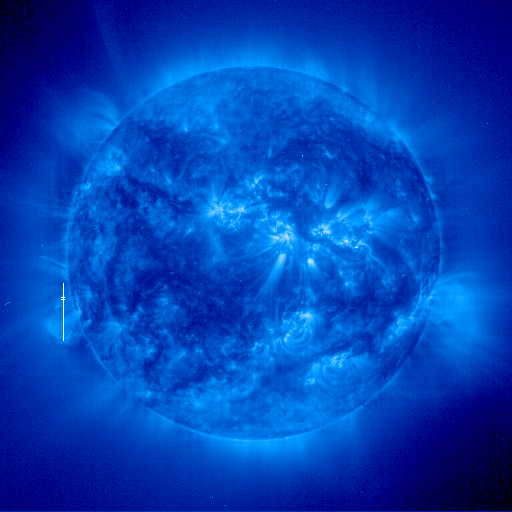
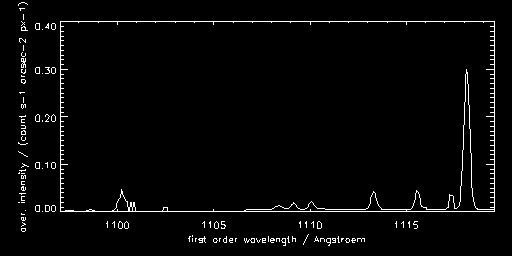
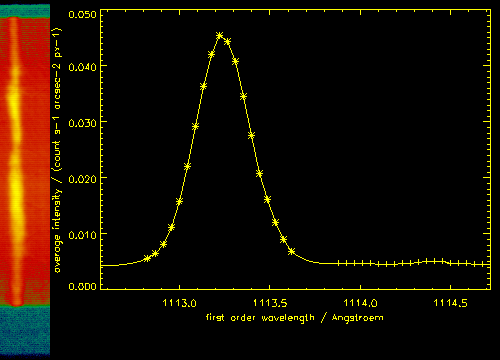
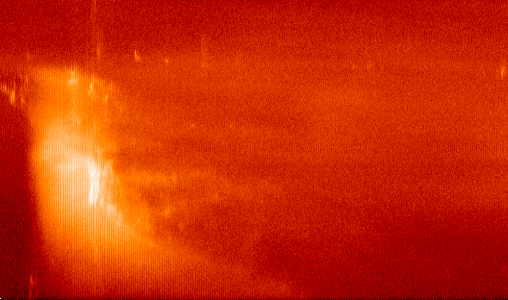
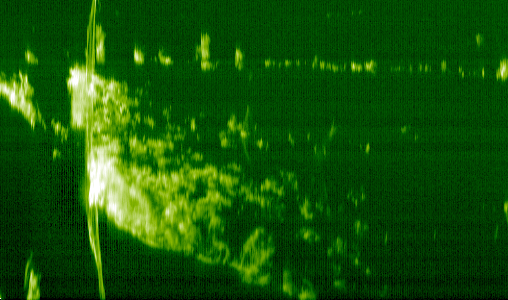
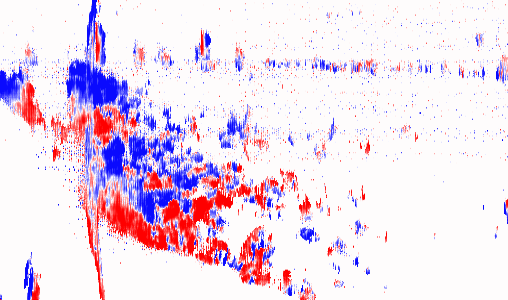
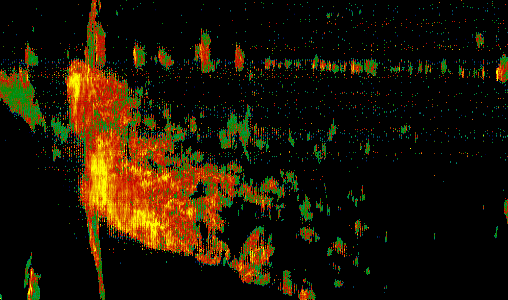
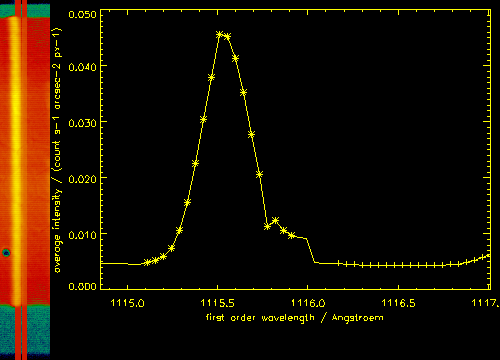
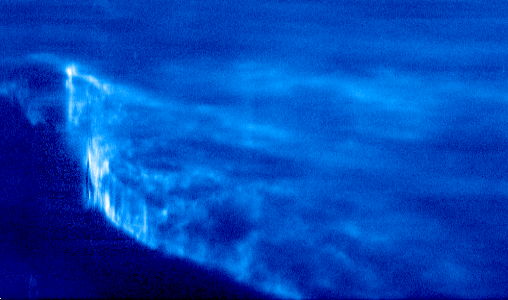
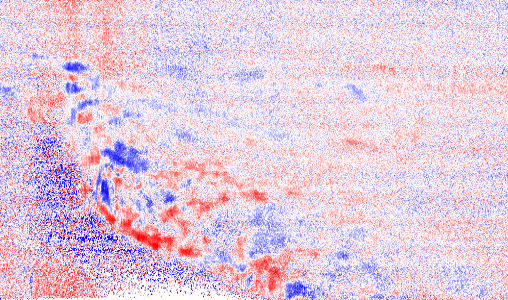
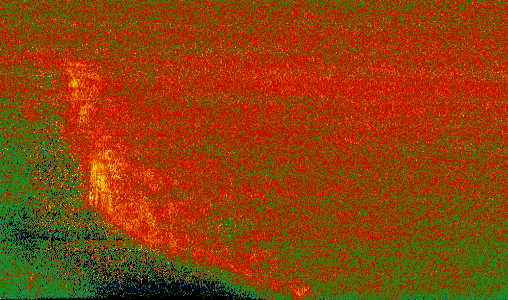
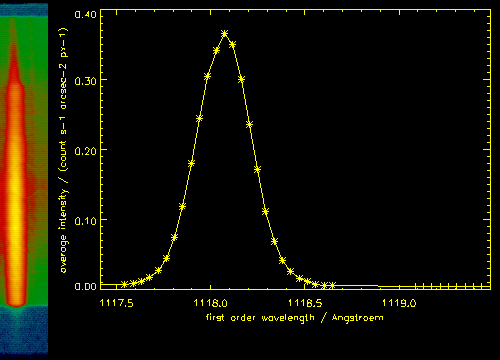
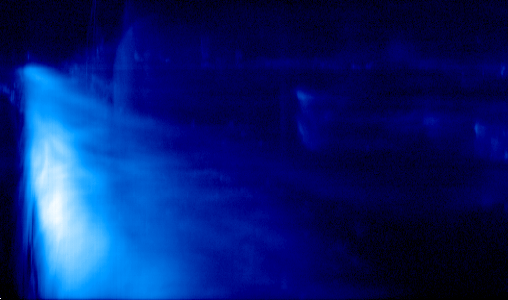
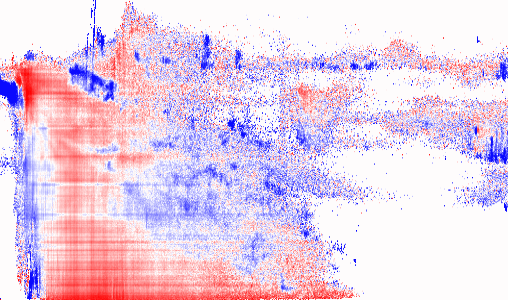
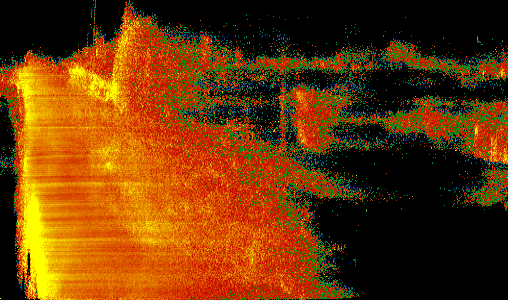
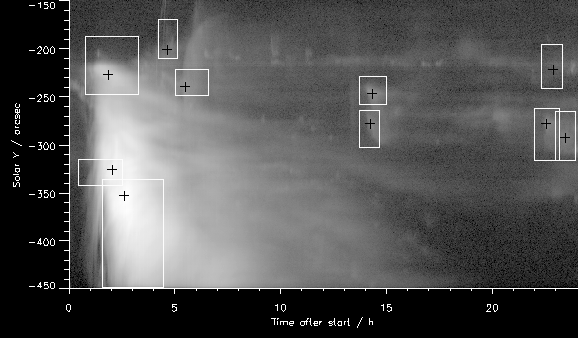
Time Solar X Solar Y Intensity Size Shift Width /UT /arcsec /arcsec /count s-1 /arcsec /km s-1 /km s-1 ----- ------- ------- ------------ ------- ------- ------- 01:48 -999 -237 13.8822 58 20 64 01:59 -999 -332 84.6271 26 8 61 02:33 -999 -358 115.728 108 8 74 04:36 -999 -212 0.627655 39 15 64 05:27 -999 -249 1.22376 26 23 70 14:10 -999 -286 0.607867 37 16 54 14:16 -999 -256 1.06688 28 8 55 22:30 -999 -286 1.08398 52 24 62 22:49 -999 -232 0.213790 44 25 63 23:23 -999 -300 0.458760 49 24 57
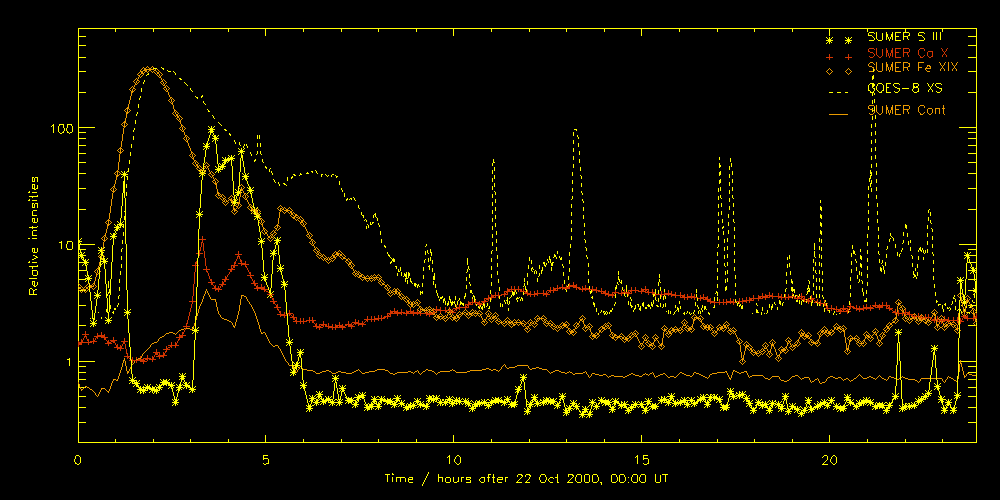

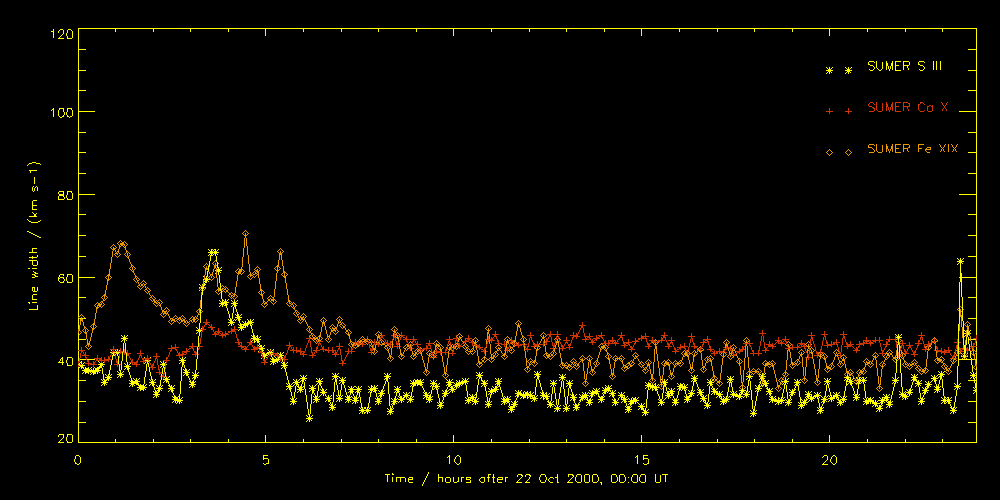
goes-time in h after 22 Oct 2000, 00:00 UT sumer_time in h after 22 Oct 2000, 00:00 UT intens_goes GOES XS 0.5-4 in W / m2 intens_s3 in SUMER count / (line * 162.5 s * px) intens_ca10 intens_fe19 intens_cont Cont 1116 in count / (Å * 162.5 s * px) shift_s3 in km/s shift_ca10 shift_fe19 width_s3 in km/s width_ca10 width_fe19 1 px corresponds to 4.0" x (300/287)".